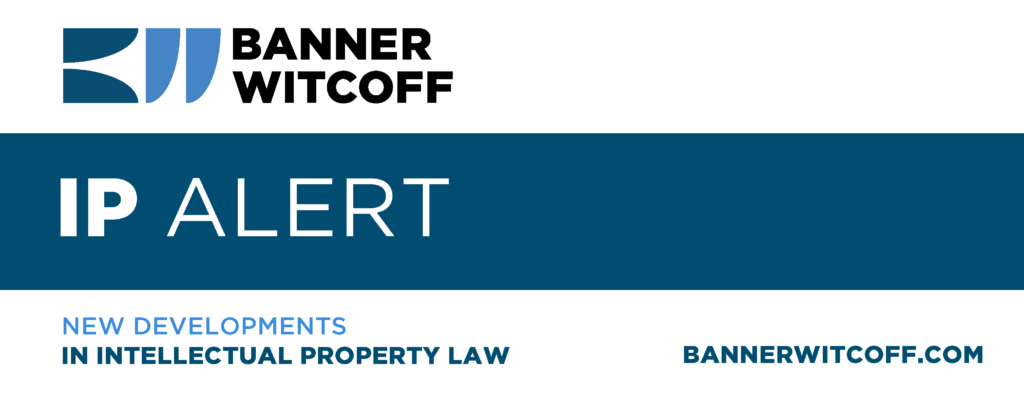
Endo Pharm. Inc. v. Actavis LLS
Patent law often makes subtle distinctions. One of these distinctions involves the power of words. In some situations, merely stating the words to describe an invention is sufficient and in others, it is not. Such a distinction is involved in the recent decision of the U.S. Court of Appeals for the Federal Circuit in Endo Pharm. Inc. v. Actavis LLC (Case 2018-1054, May 3, 2019).
The suit is related to oxymorphone, a drug used for treating pain. The specification of U.S. Patent 8,871,779 (‘779) discloses a process for purifying the drug to eliminate a common impurity. The ‘779 patent claims asserted against Actavis are directed to compositions of the drug that have a very low level of a particular contaminant.
The district court below had found the claims not obvious over three references disclosing purification methods. The district court did not consider a U.S. Food and Drug Administration (FDA) communication to be prior art. The FDA communication mandated that manufacturers reduce certain impurities in oxymorphone to below 0.001 percent due to mutagenicity.
The majority of the appellate panel held, contrary to the district court, that the FDA mandate was prior art under pre-AIA 35 U.S.C. § 102(f),[1] even though it was not a widely disseminated document or a document that explained how to achieve such a low impurity level. Nonetheless, the majority found that the FDA mandate did not overcome the failure of the three “purification” references to provide a reasonable expectation of success. Rather, the majority found that the FDA mandate recognized the challenge in achieving its standard, supporting the majority’s finding of non-obviousness.
The dissent noted that the FDA mandate disclosed every limitation of claim 1 and was, therefore, very relevant to providing motivation to combine the three primary references. The majority distinguished between its view that the FDA mandate provided a motivation to solve the problem and the dissent’s view that the mandate provided motivation to combine references. Generalized motivation to solve without any teaching of how to do so was not sufficient to complete the prima facie case.
The dissent also objected to the form of the claim. Despite the fact that the patent specification taught a method of purifying oxymorphone, the patent claimed the product of that purification (the patentee “did not claim that process.”) Moreover, the claim used essentially the same language as the FDA mandate.
| FDA mandate | Claim 1 of U.S. 8,871,779 |
| Opioid manufacturers [must] reduce ABUK[2] impurities in oxycodone and oxymorphone to below 0.001%. | A hydrochloride salt of oxymorphone comprising less than 0.001% of 14-hydroxymorphinone. |
The majority responded to the dissent’s objection to claim form, stating that “patent law allows a party like Endo to gain from its efforts by securing a patent on a composition,” citing the language of 35 U.S.C. § 101 which includes compositions of matter as a permissible category of patent-eligible invention.
The dissent may have been influenced by the correspondence of the language in the FDA mandate and the patent claims. The dissent considered the FDA mandate more legally significant than the majority of the panel, i.e., the mandate provided a motivation to combine the cited references rather than merely a motivation to solve the problem of a highly purified oxymorphone composition. The correspondence of the language may also have led the dissent to conclude that the patentee was not entitled to a composition claim but only to a method claim, since the patentee invented the method of purifying in response to the FDA’s mandate.
The cognitive tendency to give a bare statement more value than it “merits” can complicate certain analyses. A stated proposition in a prior art reference is taken as true, unless it can be shown to be non-enabling. In re Sasse, 629 F.2d 675 (C.C.P.A. 1980). Similarly, a stated proposition in a priority application can provide basis for a later claim, unless it is proven non-enabling. Manual of Patent Examining Procedure § 211.05. Thus, statements that may be intended as forward-looking may be given legal effect if it turns out that no undue experimentation was required to accomplish them. Moreover, once an invention is known to work, it can be difficult to dispel the notion that it was enabled as originally stated.
The dissent’s questioning of the propriety of the patentee’s composition claim format also reverberates in other situations. The dissent, like courts performing post-Mayo/Alice analyses, asked, to what is the invention really directed? Rather than taking the claims as patentee’s statement of the invention,[3] the post-Mayo/Alice analysis encourages or even mandates that the decider look under the hood and determine what the invention is “directed to.”[4] Indeed, the patentee did invent a purification method, and that method resulted in a novel and non-obvious composition. The majority found no reason to limit the patentee to a particular category of claim.[5]
The dissent’s animus toward the ‘779 patent is revealed in its closing statement: “…Mallinckrodt took advantage by claiming the directive [FDA mandate] itself, securing exclusive rights to a drug first approved in 1959. This is not the type of innovation that the patent system and the obviousness standard were designed to protect.” This statement reflects a growing political movement to reign in pharmaceutical companies’ practice of “evergreening.”[6] A similar animus against expensive diagnostic tests motivated the litigation that led to the Supreme Court’s Association for Molecular Pathology v. Myriad Genetics, Inc.[7]
The mere articulation of a goal, without enabling it, is not pertinent to an obviousness analysis. But, if a goal is articulated and no undue experimentation is required to achieve it, it could form the basis of a claim for benefit of an earlier priority date. Thus, a patent applicant can file for an invention without knowing if his invention works and reap a reward if it does work. Thus, words in a patent application can have a magic effect, greater than the facts behind them, if the chips fall perfectly into place after the fact.
Click here to download a printable version of this article.
[1] Prohibits the grant of a patent to one who “did not himself invent the subject matter sought to be patented.”
[2] α,β-unsaturated ketone intermediate compounds.
[3] 35 U.S.C. 112 (b) states: “The specification shall conclude with one or more claims particularly pointing out and distinctly claiming the subject matter which the inventor or a joint inventor regards as the invention.”
[4] “The first part of the Mayo test is to determine whether the claims are directed to an abstract idea, a law of nature or a natural phenomenon (i.e., a judicial exception).” M.P.E.P. 2106 (I).
[5] Certainly, composition claims can often provide broader scope of protection than method claims. For example, a method claim can protect just one way of using a product, whereas a product claim can protect any manner of making, using, or selling a product.
[6] See U.S. Senate Finance Committee’s April 9, 2019 hearing on drug pricing in America, in which pharmacy benefit managers blamed manufacturers for evergreening, identifying it as inherently anti-competitive.
[7] 569 U.S. 576 (2013).
Posted: May 22, 2019


